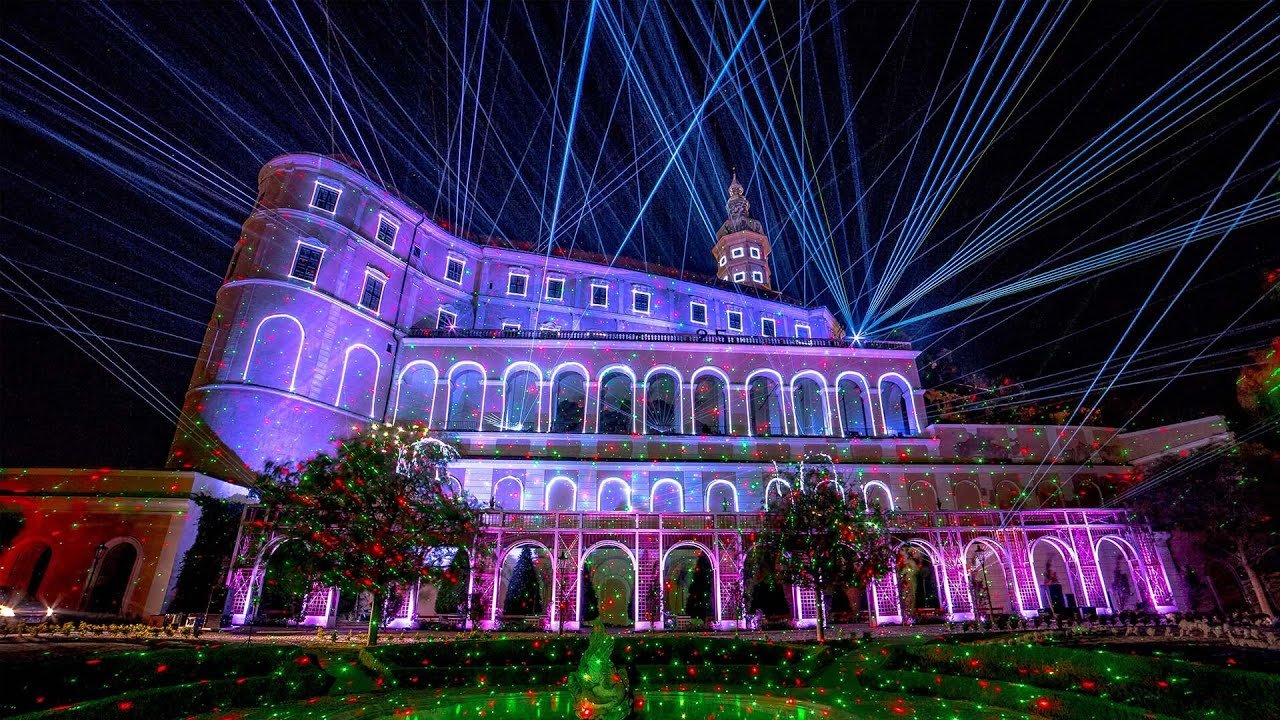Laser projection refers to the process of using lasers to project images, videos, or other visual content onto a surface. It involves the precise manipulation of laser beams to create a coherent and focused display. Laser projectors typically use one or more laser sources, such as red, green, and blue lasers, to generate a wide range of colors.
Laser projection finds applications in areas such as cinema, events and concerts, museums and galleries, virtual reality (VR), simulation, and interactive displays.
Laser projection mapping
Laser projection mapping, also known as spatial augmented reality or video mapping, is a technique that involves using lasers to project images or videos onto three-dimensional objects or surfaces. It creates the illusion of transforming the appearance of objects by accurately aligning the projected visuals with the physical features of the object.
Here’s how laser projection mapping show system works:
- Projectors: High-quality projectors are used to generate laser beams or traditional video projections. These projectors must have high brightness and resolution capabilities to ensure clear and vivid visuals. Laser projectors are often preferred for their precision and ability to produce vibrant colors.
- Mapping Software: Specialized mapping software is used to create a virtual 3D model of the object or surface onto which the projections will be mapped. The software allows the user to precisely align and adjust the projected visuals according to the object’s shape, contours, and other physical characteristics.
- Content Creation: The visual content for the projection mapping show is created using computer graphics software. Designers and artists create custom animations, videos, and images that are tailored to fit the object’s dimensions and features. This content is then mapped onto the virtual 3D model within the mapping software.
- Calibration: Once the content is created and mapped onto the virtual model, the system requires calibration. This involves aligning the virtual model with the physical object or surface in the real world. It ensures that the projected visuals accurately match the object’s shape, position, and perspective.
- Projection Mapping: With the calibration complete, the projection mapping show can begin. The projectors are set up in strategic positions to project the mapped visuals onto the object or surface. Multiple projectors may be used to cover the entire object from different angles for a seamless projection.
- Real-Time Tracking: In some cases, real-time tracking systems are employed to enhance the projection mapping experience. These systems use sensors or cameras to track the movement of the object or people interacting with it. The tracking data is fed back into the mapping software, allowing the projections to respond and adapt accordingly.
- Show Execution: Once everything is set up, the projection mapping show can be executed. The visuals are projected onto the object, bringing it to life with dynamic animations, colors, and effects. The combination of the precisely mapped content and the physical object creates a stunning and immersive visual experience.
Laser projection mapping shows are commonly used for artistic performances, advertising, product launches, themed entertainment, and architectural displays. They provide a unique way to transform static objects into dynamic and interactive visual spectacles, captivating audiences and creating memorable experiences.

